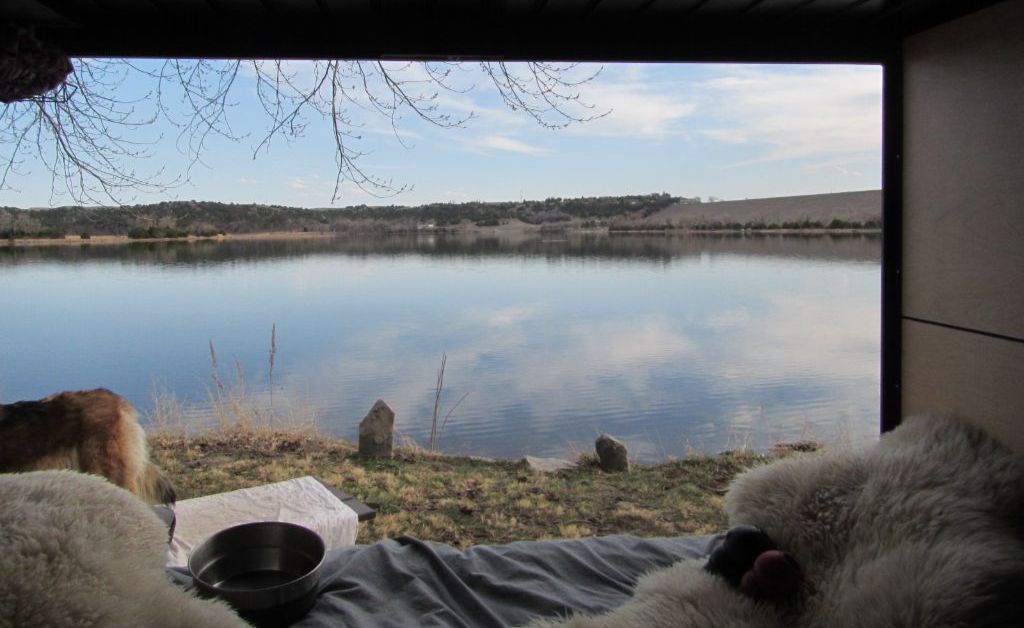We want to visit the Wind Cave National Park and the Badlands National Park in South Dakota, but it is two states and about 600 miles from our current location (Sand Hills State Park, Kansas), so we decide to break the driving up over three days.
Our first stop is Fort Kearney State Recreation Area in Nebraska. This park is perfect for us because it is open. It’s getting harder to find open campgrounds at this time of the year as we make our way north. Many don’t open until May. Fortunately for us, the electricity is turned on and flush toilets and coin operated showers are available (showers were pretty good). Only ourselves and the camp hosts in the park, so a nice quiet place to drop anchor for the night, and the kids could play off-leash. The park has 7 small lakes (large ponds?) that are stocked with fish in the summer. Nice little park.
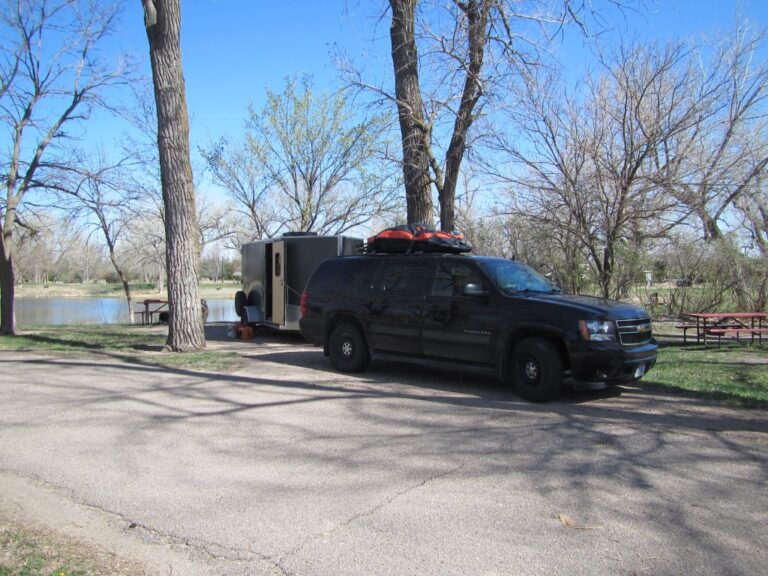
I want to stop in North Platte to see the world’s largest railroad classification yard, which is operated by Union Pacific. A classification (aka marshalling or shunt) yard is used to pick out rail cars from incoming trains and assemble them into new outgoing trains.
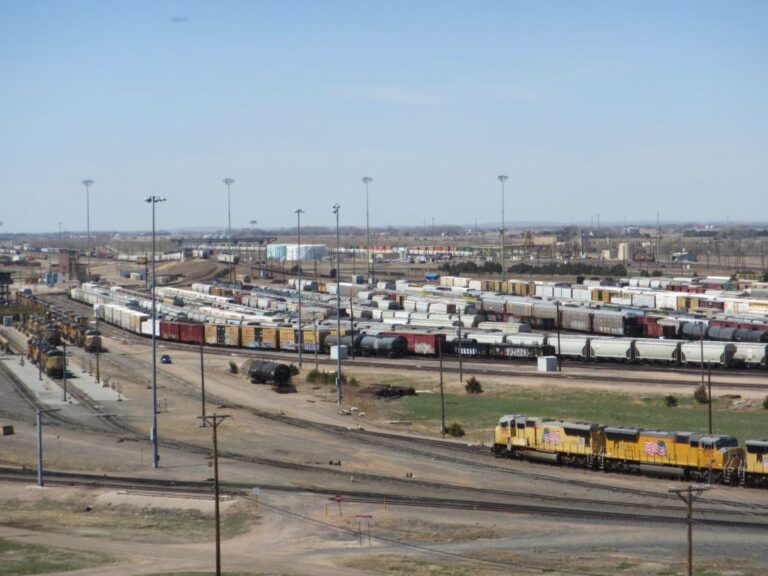
Incoming trains are slowly pushed up a small hill, the cars are decoupled, then they roll down the other side of the hill. Switches then direct the cars into one of several rail lines.
The Bailey yard also has a huge facility for repairing train engines which services 9000 engines per month.
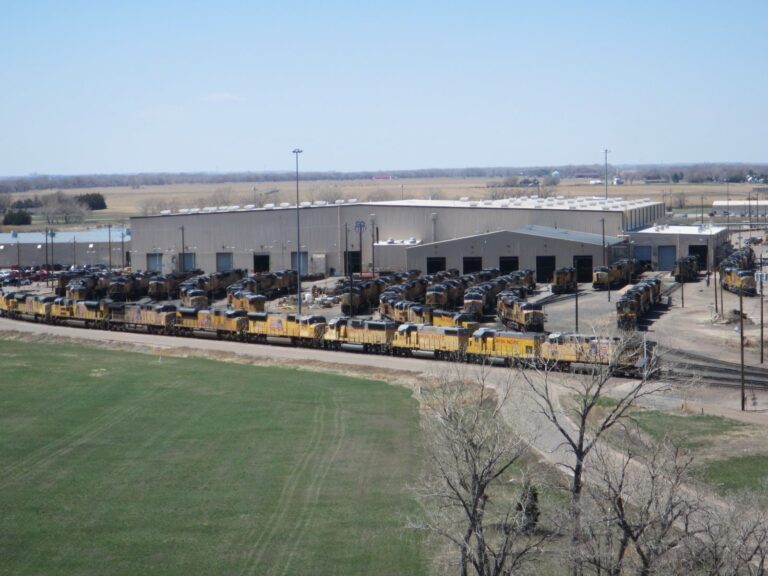
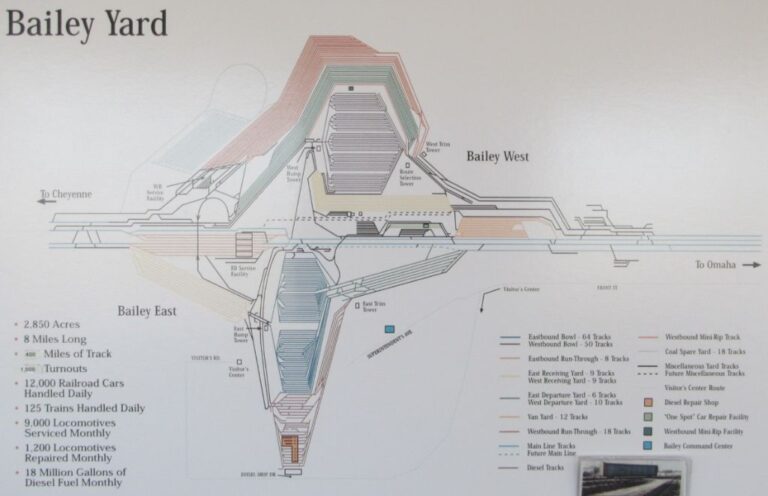
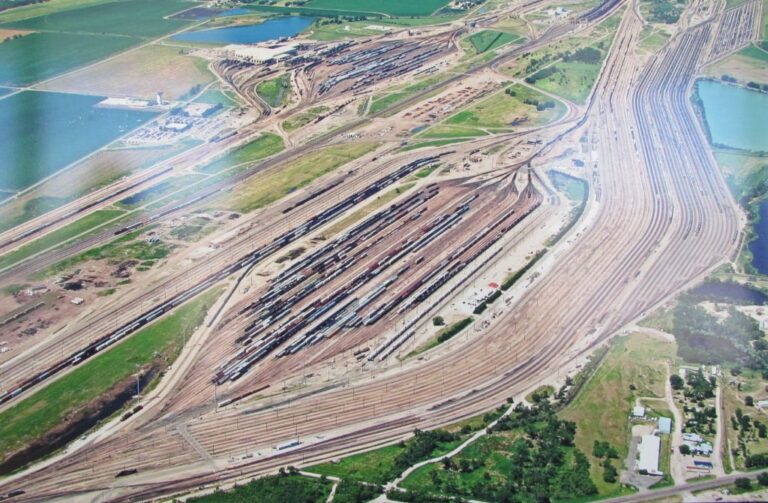
Trains enter the yard from either direction (east or west) and are disassembled, moved onto different assembly lines, and then reassembled and moved out in the opposite direction from where they entered the yard (i.e. trains travelling west enter the east end of the yard and then exit the west end of the yard, still travelling west).
When individual train cars are decoupled from the incoming train, at the top of the small hills (called “humps”) they roll down the opposite side of the hump by gravity and then a computer determines which track the car needs and sets the rail switches accordingly. The cars roll down into a slight depression called a “bowl” which stops the cars from continuing to roll down the track. If another car is already on the track, the gravity assisted motion of the car rolling down the hump is enough to activate the couplers as it hits the stationary car. Simple technology, but it works!
Some quick facts:
- 12,000 rail cars handled per day
- 125 trains handled per day
- 18 million gallons of fuel loaded into engines per month
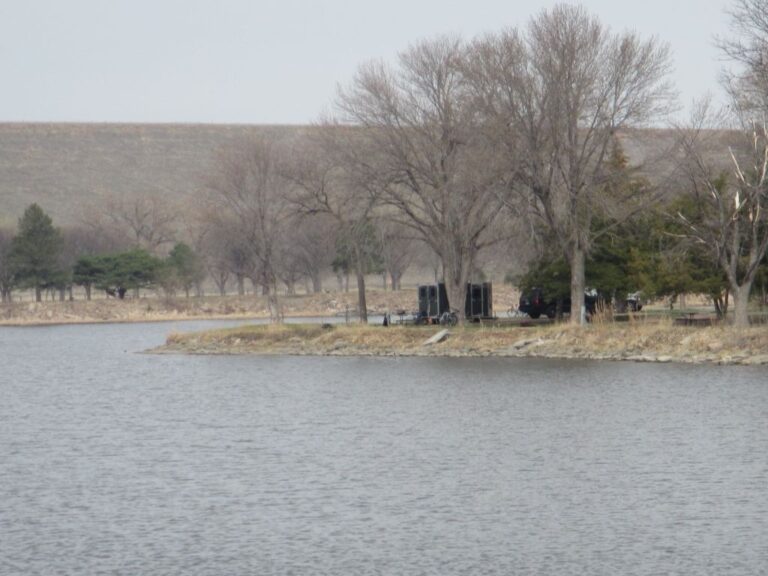
Lake Ogallala State Recreation Area, Nebraska, is our next stop. We chose this place to open, because… you guessed it, it was open (power is on, and toilets are open, no showers though).
We got a nice site that backed onto a small lake, created by the runoff from the reservoir for the much larger Lake McConaughy (located just on the other side of the large berm you can see in the background of the photo).
Only a few fishermen (men no women) in the park, so not busy at all (too early in the year I guess). There is a 6 km walk along the edge of the lake, so the dogs had a nice off-leash walk and swim.
There was a sudden windstorm in the evening. Dust was flying at high speed as we were scurrying around picking up anything that might get blown away. The wind lasted into the night, but was calmer in the morning, good thing too as I wouldn’t want to pull the trailer in that kind of wind.
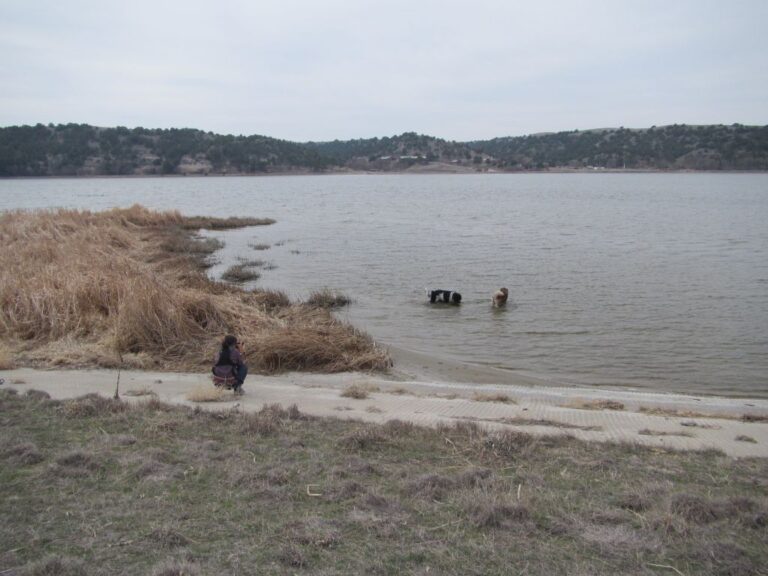
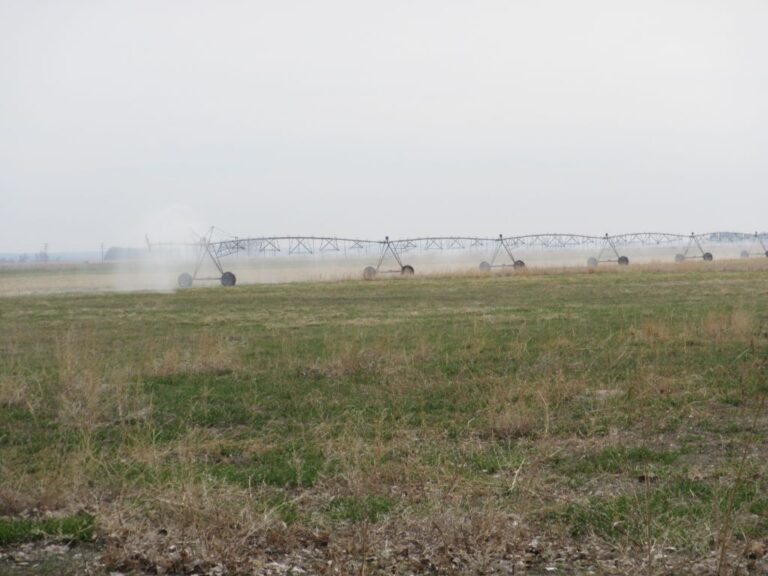
Not related to the park, but just outside of the campground was a farmer’s field and they were irrigating it. In our travels we have seen many examples of this type of irrigation equipment. Wheels move the equipment either back-and-forth across a field, or around in a circle from a fixed central point (the latter is the most common).
We had never seen one in operation, but in the morning this one was running. It moves very slowly, you can’t really see it move while you watch it, but look again in several minutes and you can tell it has moved. Pipes that end with water spray tips, that look like fire nozzles seen on office ceilings, are suspended between sets of wheels and send out a large volume of water onto the ground below.
Trip Summary:
Depart: Sand Hills State Park, KS 10:00 am Apr 16; Odometer: 137160 miles
Arrive: Fort Kearney State Recreation Area, NE 4:00 pm Apr 16; Odometer: 137414 miles
Depart: Fort Kearney State Recreation Area, NE 11:00 am Apr 17; Odometer: 137416 miles
Arrive: Lake Ogalla State Recreation Area, NE 5:15 pm Apr 17; Odometer: 137600 miles
Gas Summary:
McPherson, KS (Apr 16): 20.4g @ $3.14/g ($64.06) – ODO 137187 miles
Smith Center, KS (Apr 16): 21.4g @ $3.26/g ($69.85) – ODO 137340 miles
North Platte, NE (Apr 17): 19.3g @ $3.49/g ($67.58) – ODO 137519 miles

